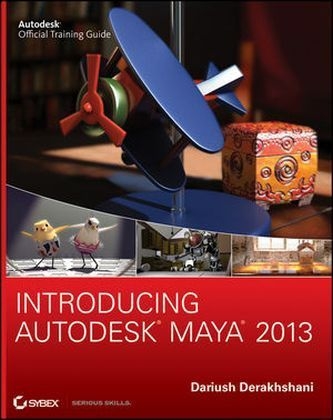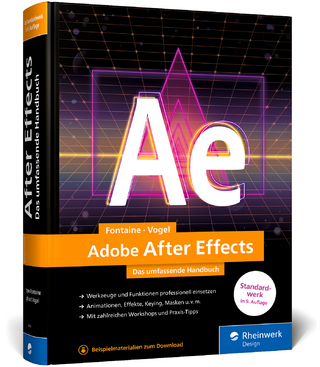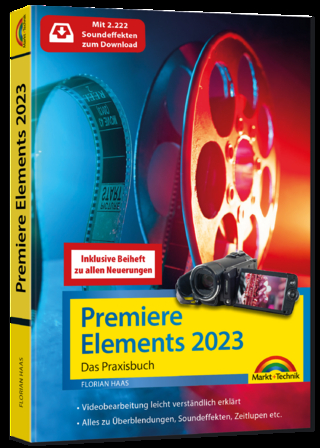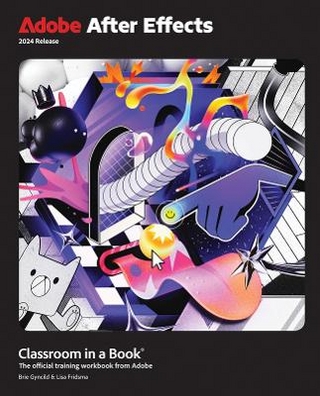
Introducing Autodesk Maya 2013
John Wiley & Sons Inc (Verlag)
978-1-118-13056-8 (ISBN)
- Titel ist leider vergriffen;
keine Neuauflage - Artikel merken
A complete update to the popular Autodesk Official Training Guide for Maya Maya is the industry-leading 3D animation and effects software used in movies, visual effects, games, cartoons, and other animation. This bestselling, official guide is a must for 3D beginners who want a thorough grounding in this dynamic and complex software. Fully updated for the newest version of Maya, the book explains the interface and the basics of modeling, texturing, animating, dynamics, visualization, and visual effects. Fun and challenging tutorials lead you through the nuances of the software and offer plenty of chances to practice what you've learned.
* The Autodesk Official Training Guide for Maya, endorsed and promoted by Autodesk to its 2,500 Authorized Training Centers worldwide * Maya is the 3D animation and effects software used in the film, game, and advertising industries; it's a complex program and this book gives beginners the knowledge and confidence they need * Shows how to master the interface and the basics of modeling, texturing, animating, and visual effects * Step-by-step tutorials offer realistic, professional challenges for those new to 3D and those switching from another 3D application * Materials are available for instructors who want to use this guide with their students Introducing Autodesk Maya is the perfect guide to get you up and running on the world's most popular professional 3D application.
Dariush Derakhshani is an award-winning visual effects supervisor, author, and educator. He has worked on movies such as The Fantastic Four and Pan's Labyrinth, the South Park TV series, and countless commercials and music videos. He teaches Maya and 3D animation, and is the author of all the Introducing Maya books, as well as coauthor of Autodesk 3ds Max 2012 Essentials and Autodesk 3ds Max 2013 Essentials.
Introduction xvii Chapter 1 Introduction to Computer Graphics and 3D 1 Art? 2 Computer Graphics 2 The Stages of Production 4 The CG Production Workflow 8 Core Concepts 10 Basic Film Concepts 21 Summary 26 Chapter 2 Jumping in Headfirst, with Both Feet 27 You Put the U in UI 28 Project Overview: The Solar System 33 The Preproduction Process: Planning 33 Creating a Project 34 The Production Process: Creating and Animating the Objects 36 Hierarchy and Maya Object Structure 49 The Solar System Resumed 52 Outputting Your Work: Playblasting 60 Summary 62 Chapter 3 The Autodesk Maya 2013 Interface 63 Navigating in Maya 64 Exploring the Maya Layout 64 Building a Decorative Box 78 Mapping the Box s Reference Planes with Hypershade 82 Organizing Workflow with Layer Editor 86 Modeling the Decorative Box 88 Editing the Decorative Box Model Using the Shelf 94 Continuing the Decorative Box Model 99 Finishing the Decorative Box Model 102 Summary 109 Chapter 4 Beginning Polygonal Modeling 111 Planning Your Model 112 Polygon Basics 114 Poly Editing Tools 116 Putting the Tools to Use: Making a Simple Hand 120 Creating Areas of Detail on a Poly Mesh 127 Modeling a Catapult 134 Suggestions for Modeling Polygons 156 Summary 156 Chapter 5 Modeling with NURBS, Subdivisions, and Deformers 157 NURBS! NURBS! 158 Using NURBS Surfacing to Create Polygons 170 Converting a NURBS Model to Polygons 172 Editing NURBS Surfaces 173 Patch Modeling: A Locomotive Detail 175 Using Artisan to Sculpt NURBS 187 Modeling with Simple Deformers 189 The Lattice Deformer 193 Animating Through a Lattice 197 Subdivision Surfaces 200 Creating a Starfish 200 Building a Teakettle 205 Summary 213 Chapter 6 Practical Experience 215 Evaluating the Table Lamp 216 Modeling the Base 217 Creating the Lamp Stem 219 Modeling the Lampshade 231 Making the Toy Airplane 236 Using References 263 Finishing the Toy Airplane 265 Updating the Reference 268 Summary 269 Chapter 7 Autodesk Maya Shading and Texturing 271 Maya Shading 272 Shader Types 272 Shader Attributes 276 Texturing the Table Lamp 280 Textures and Surfaces 286 Textures and UVs for the Red Wagon 293 Photo-real Mapping: The Decorative Box 327 For Further Study 344 Summary 344 Chapter 8 Introduction to Animation 347 Keyframe Animation Bouncing a Ball 348 Throwing an Axe 359 Replacing an Object 376 Animating Flying Text 377 Rigging the Locomotive, Part 1 382 Animating the Catapult 385 Summary 390 Chapter 9 More Animation! 393 Skeletons and Kinematics 394 Skeletons: The Hand 407 Inverse Kinematics 422 Basic Relationships: Constraints 427 Basic Relationships: Set-Driven Keys 432 Application: Rigging the Locomotive 435 Summary 442 Chapter 10 Autodesk Maya Lighting 443 Basic Lighting Concepts 444 Maya Lights 448 Light Linking 454 Adding Shadows 455 Raytracing Soft Shadows 459 mental ray Lighting 460 mental ray Physical Sun and Sky 462 Lighting Effects 467 Lighting the Table Lamp and Decorative Box 471 Further Lighting Practice 477 Tips for Using and Animating Lights 478 Summary 480 Chapter 11 Autodesk Maya Rendering 481 Rendering Setup 482 Previewing Your Render: The Render View Window 491 Reflections and Refractions 493 Using Cameras 495 Motion Blur 501 Batch Rendering 501 Rendering the Wine Bottle 502 mental ray for Maya 506 Render Layers 511 Final Gather 520 Ambient Occlusion 523 HDRI 530 Displacement Mapping the Decorative Box 532 Rendering the Lamp and Decorative Box 540 Summary 550 Chapter 12 Autodesk Maya Dynamics and Effects 551 An Overview of Dynamics and Maya Nucleus 552 Rigid and Soft Dynamic Bodies 552 Animating with Dynamics: The Pool Table 556 Fun Dynamics: Shoot the Catapult! 565 nParticle Dynamics 568 Emitting nParticles 568 Animating a Particle Effect: Locomotive Steam 574 Introduction to Paint Effects 580 Toon Shading 584 Customizing Maya 587 Summary 591 Where Do You Go from Here? 591 Index 593
| Erscheint lt. Verlag | 1.5.2012 |
|---|---|
| Verlagsort | New York |
| Sprache | englisch |
| Maße | 187 x 229 mm |
| Gewicht | 1260 g |
| Themenwelt | Informatik ► Grafik / Design ► Film- / Video-Bearbeitung |
| Informatik ► Grafik / Design ► Maya | |
| Informatik ► Office Programme ► Outlook | |
| ISBN-10 | 1-118-13056-1 / 1118130561 |
| ISBN-13 | 978-1-118-13056-8 / 9781118130568 |
| Zustand | Neuware |
| Informationen gemäß Produktsicherheitsverordnung (GPSR) | |
| Haben Sie eine Frage zum Produkt? |
aus dem Bereich


